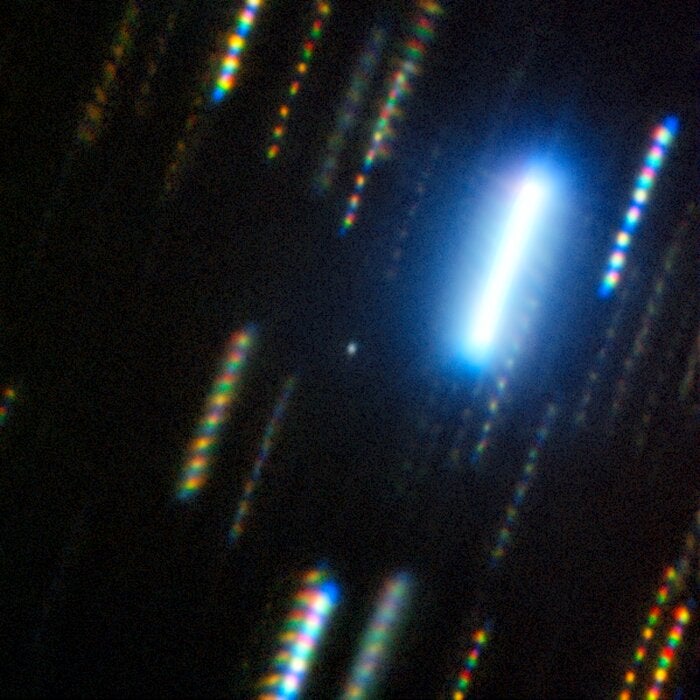Surprising origin of ‘city-killer’ asteroid that may strike Moon revealed
Nearly 60m space rock is oddly hockey puck-shaped and rapidly rotates every 20 minutes
A “city-killer” space rock headed for a potential collision with the Moon likely originated in the asteroid belt near Jupiter, a region not known to produce Earth-crossing asteroids, according to a new study.
Astronomers used the Keck Observatory in Hawaii to study the physical properties and potential origin of 2024 YR4, first discovered in December 2024 and initially thought to be on a collision course with the Earth.
The study, set to be published in The Astrophysical Journal Letters, revealed that the nearly 60m space rock was hockey puck-shaped and rapidly rotated every 20 minutes.
“YR4 spins once every 20 minutes, rotates in a retrograde direction, has a flattened, irregular shape and is the density of solid rock,” research lead Bryce Bolin said in a statement.
“This find was rather unexpected since most asteroids are thought to be shaped like potatoes or toy tops rather than flat disks.”

It would be one of the largest asteroids in recent history to potentially hit the Moon and astronomers said they were eager to study the kind of crater a rock of this size could leave.
“The physical information about an asteroid’s physical property is crucial for planning mitigation efforts if necessary,” Dr Bolin said.
The latest study suggested that the asteroid may have been a boulder that once sat on the surface of a larger rubble-pile asteroid.

Astronomers looked at how the rock absorbed sunlight and emitted the energy out as heat and found that it was rich in silicates. This showed that 2024 YR4 “most likely” originated in the solar system’s main asteroid belt between Mars and Jupiter.
The building-sized rock was likely pushed into its current near-Earth orbit by gravitational interactions with Jupiter, the researchers said, adding that the rapid spin could have caused it to migrate inward from the central asteroid belt.
“We are a bit surprised about its origin in the central main asteroid belt, which is a location in the asteroid belt that we did not think many Earth-crossing asteroids could originate from,” Dr Bolin said.
“We compare the orbital elements of 2024 YR4 with the near-earth asteroid population model and find that its most likely sources are resonances between the inner and central main belt.”
The findings could enhance understanding of the risks of collisions between our planet and major bodies in crossing orbits, the researchers said.
Join our commenting forum
Join thought-provoking conversations, follow other Independent readers and see their replies
Comments